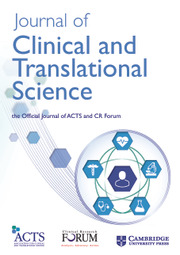No CrossRef data available.
Article contents
284 Explaining the Transportation Dimension of Food Access
Published online by Cambridge University Press: 19 April 2022
Abstract
OBJECTIVES/GOALS: Lack of a vehicle and the distant location of supermarkets influence the ease with which people can shop for healthy foods. The aim of this qualitative study is to understand how transportation impacts food access and food purchases of Baltimore residents who do not own an automobile. METHODS/STUDY POPULATION: The Lyft Grocery Access Program was piloted in Baltimore, MD from November 2019 through September 2020. Eligible households resided in Healthy Food Priority Areas, formerly known as food deserts, in south and west Baltimore and also did not own a vehicle. Enrolled households were offered discounted Lyft rides to select supermarkets. Participants for the present study will be purposively recruited via email and phone using contact information that was provided by enrolled households during the pilot program. Each in-depth interview will be conducted via Zoom and recorded, transcribed and analyzed for themes by two trained coders. Data collection and analysis will occur simultaneously. Data collection will cease once data saturation is reached and themes will be derived from the data. RESULTS/ANTICIPATED RESULTS: This study is in progress. Anticipated themes may relate to the food environment, transportation and food access. DISCUSSION/SIGNIFICANCE: Access to healthy foods is an important determinant of health, and how food access is impacted by broader aspects of daily living such as transportation will add to the food access literature. Findings may provide new insights that can help inform food policy and transportation planning in urban communities.
- Type
- Valued Approaches
- Information
- Creative Commons
- This is an Open Access article, distributed under the terms of the Creative Commons Attribution-NonCommercial-NoDerivatives licence (https://creativecommons.org/licenses/by-nc-nd/4.0/), which permits non-commercial re-use, distribution, and reproduction in any medium, provided the original work is unaltered and is properly cited. The written permission of Cambridge University Press must be obtained for commercial re-use or in order to create a derivative work.
- Copyright
- © The Author(s), 2022. The Association for Clinical and Translational Science


